Not to worry—that’s what this article is for! Let’s explore some popular types of chocolate and see how they can affect your baking and make your treats even more delicious.
How do you make chocolate, anyway?
Making this ingredient called chocolate is a long process that begins far before the local chocolate shop or grocery store. Yup, you don’t just manufacture a chocolate bar and then sell it in stores. It’s a lot more complicated than that!
To make chocolate, you actually start with the seeds of the Theobroma cacao tree, also known as cacao beans. The beans from the tree are dried, roasted, and then ground, resulting in two products: cocoa butter, a smooth, solid, white fat; and what is called chocolate liquor, or ground cocoa beans.
The variety in chocolate mainly depends on how much cocoa butter and chocolate liquor it has compared to sugar, milk solids, and other things mixed in.
Types of Chocolate
On to the main section of this article! Here are some popular kinds of chocolate.
Milk Chocolate

Milk chocolate is a beloved kind of chocolate that you can enjoy for its smooth, creamy texture and sweet, mellow flavor. You can make this type of chocolate by combining cocoa solids with cocoa butter, sugar, and, as the name suggests, milk, either in liquid, powder, or condensed form. The presence of milk gives it a lighter color and a softer texture compared to its darker counterparts.
Typically, milk chocolate contains about 10% to 40% cocoa mixed with a higher proportion of sugar, which makes it much sweeter and less bitter than dark chocolate. Its mild and sweet profile makes it a popular choice for snacking, candy bars (like those covered in this article), and baking, appealing to a wide range of palates, especially those who prefer a less intense chocolate experience. Milk chocolate’s versatility and delightful taste make it a staple in the world of confections and desserts.
White Chocolate
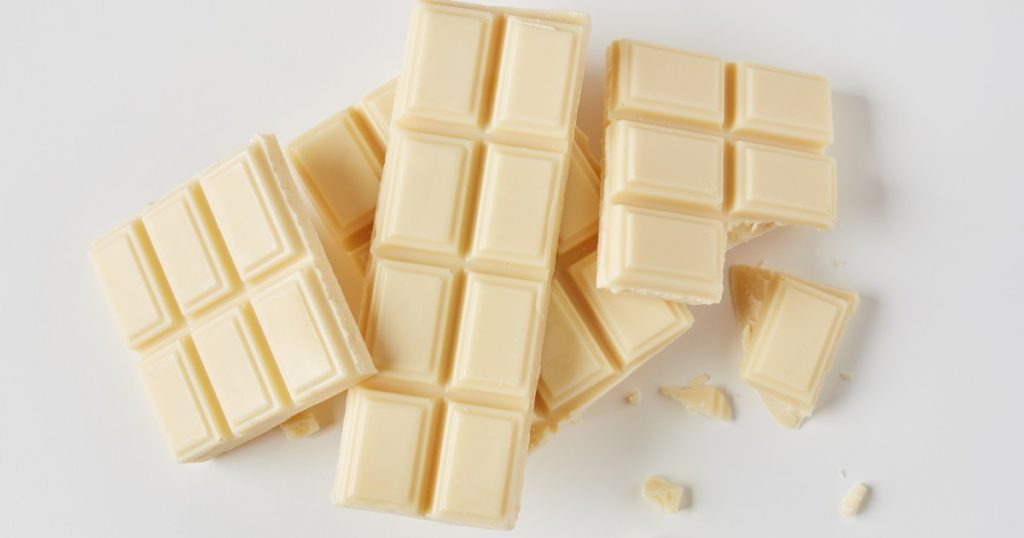
White chocolate stands out in the chocolate family for its, well, white color. Aside from that, white chocolate doesn’t contain cocoa solids – the element that gives chocolate its usual brown color and rich taste. Instead, it’s made primarily from cocoa butter, which is the fat extracted from cocoa beans, combined with sugar and milk solids. This unique blend results in a creamy, ivory-colored chocolate with a smooth, velvety texture.
White chocolate’s flavor is sweet and rich-when you taste it, you might describe it as having a delicate, buttery profile with hints of vanilla. It lacks the bitterness associated with cocoa solids, making it a favorite for those who prefer a sweeter and less intense chocolate taste. The minimum cocoa butter content in white chocolate is usually about 20%, contributing to its melt-in-the-mouth quality.
White chocolate’s mellow and sweet character makes it a popular choice for ganaches, frostings, and as a coating for truffles and candies. Its ability to pair well with a variety of flavors, from fruits to nuts, also makes it a valuable ingredient for creating different kinds of desserts, even avant-garde ones. For those who enjoy experimenting in the kitchen, white chocolate offers a delightful canvas for culinary creativity.
Dark Chocolate

Dark chocolate is different from milk or white chocolate because it has more cocoa and less sugar. This gives it a darker color and gives it a bold, intense flavor. Dark chocolate is made with cocoa solids, cocoa butter, and a small amount of sugar, but usually doesn’t have much or any milk.
The amount of cocoa in dark chocolate can be anywhere from 30% to over 80%, meaning it is less sweet chocolate. However, people still like it because they consider it to be healthier and full of antioxidants. It’s great for baking things like rich cakes and desserts like chocolate brownies, and it goes well with lots of flavors, like fruits and nuts, especially if you’re looking for a flavor profile with a really chocolatey taste.
Unsweetened Chocolate
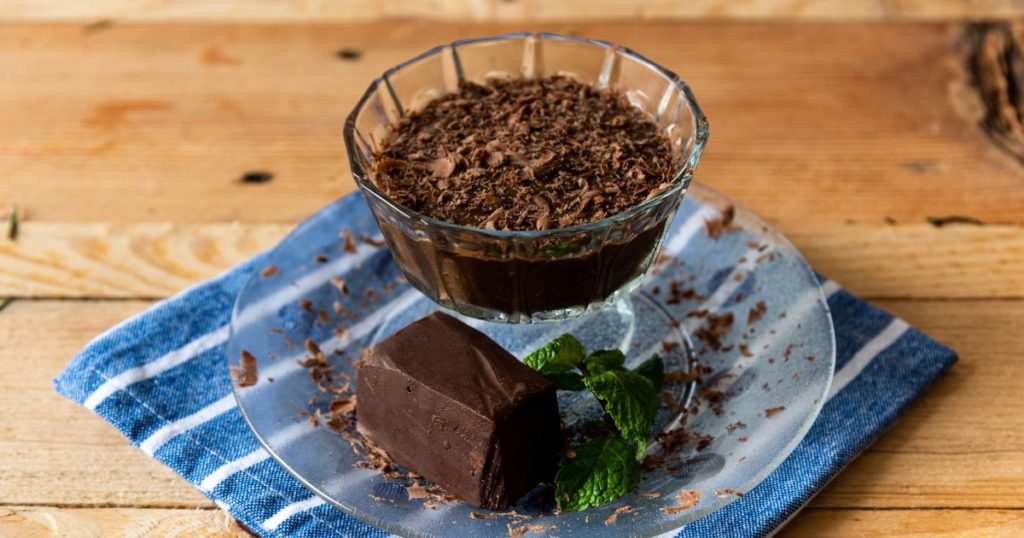
Unsweetened chocolate, also referred to as baking chocolate, is a pure form of chocolate used in cooking and baking. It’s made entirely from ground cocoa beans, resulting in a product that contains 100% cocoa solids without any added sugar. This gives this chocolate bar a very strong and bitter taste, making it unsuitable for eating on its own but ideal for recipes where other ingredients add the necessary sweetness.
You can use unsweetened chocolate as a base in recipes, combined with sugar and other ingredients to create a balanced flavor profile. Since it provides a deep, rich chocolate flavor to chocolate cakes, brownies, and other desserts and doesn’t have sugar, it allows bakers to control the level of sweetness in their creations. Its versatility makes it a must-have for anyone who loves to bake and experiment with chocolate recipes.
Cocoa Powder
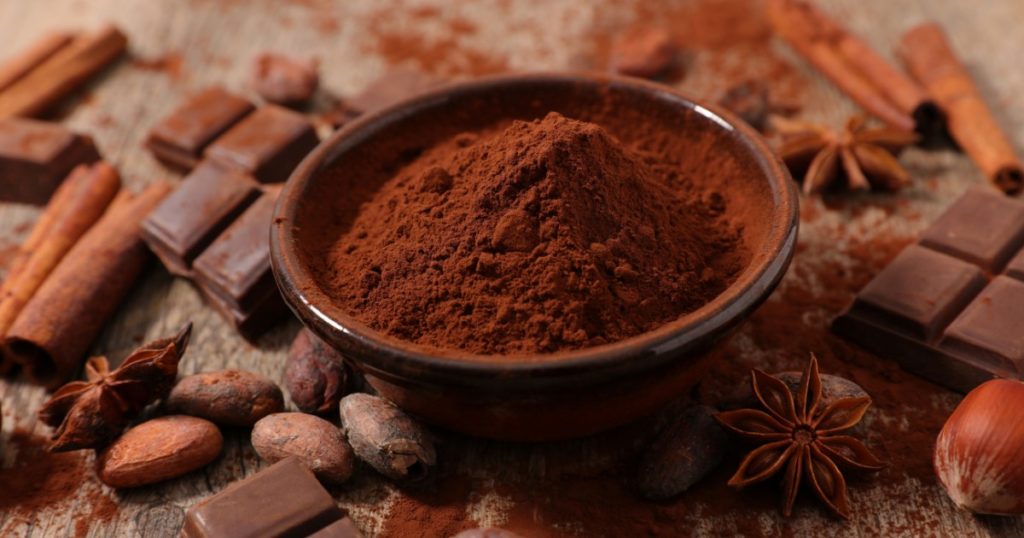
Cocoa powder is a key ingredient in many baking recipes, known for its rich flavor and versatility. You make it by grinding cocoa beans and removing most of the cocoa butter, leaving a fine powder. This process results in a product that’s almost 100% pure cocoa content, giving it a strong, bitter chocolate flavor.
Because it’s unsweetened and has a low fat content, cocoa powder is perfect for adding a deep chocolate flavor to baked goods like cakes, cookies, and brownies without making them too heavy. It’s You can also use it in other recipes like hot chocolate, chocolate sauces, and even some savory dishes for a touch of richness. Cocoa powder also easily mixes into batters and doughs.
Couverture Chocolate
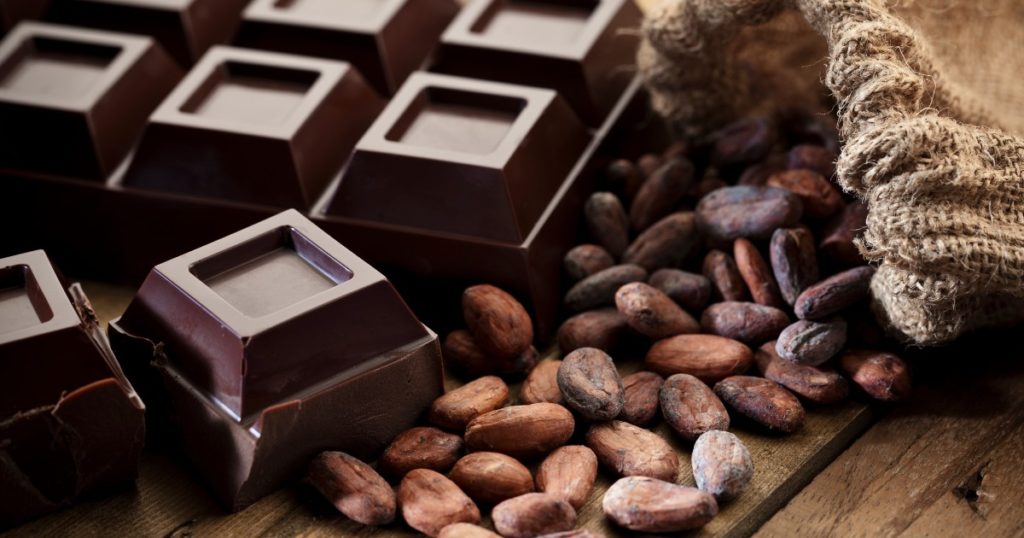
Couverture chocolate is a high-quality chocolate that is a favorite among professional chocolatiers and pastry chefs. What sets it apart is its high cocoa butter content, typically ranging from 32% to 39%, which gives it a superior ability to coat and mold into shapes with a smooth, glossy finish. This high percentage of cocoa butter, combined with proper tempering, ensures that couverture chocolate melts evenly and has a satisfying snap when broken.
This kind of chocolate comes in dark, milk, and white chocolate varieties, offering versatility in flavor and application. It’s also Ideal for making fine chocolates, truffles, and chocolate decorations, especially since couverture chocolate has a rich flavor and creamy texture. Whether it’s for dipping, coating, or as a base for ganaches, couverture chocolate provides a luxurious taste and professional-quality results, making it a must-have for anyone serious about chocolate crafting.
Want a taste of using this type of chocolate? Try out Chef Ely Salar’s The Art of Chocolate class.
Ruby Chocolate
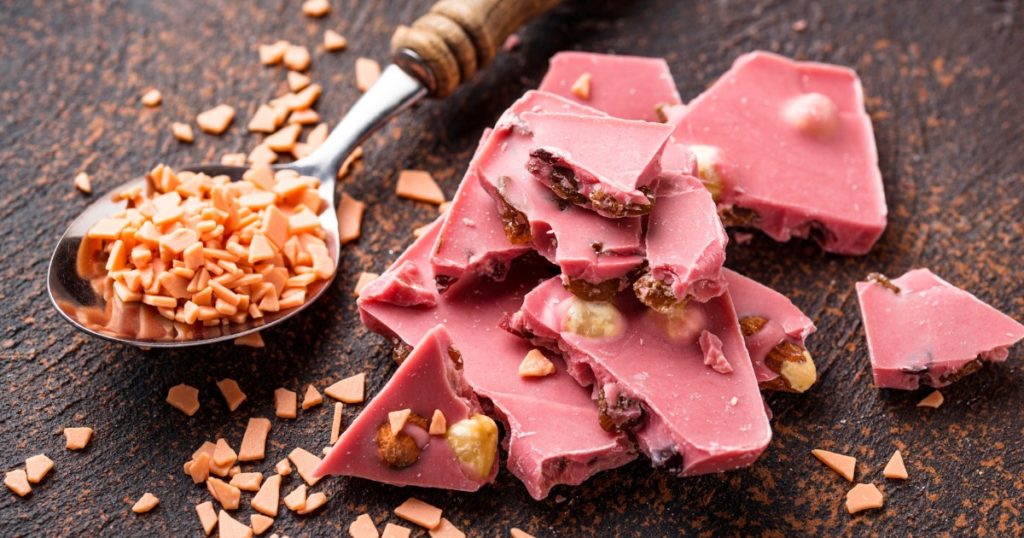
Ruby chocolate is a relatively new and unique addition to the chocolate world, known for its striking pink color and distinct flavor. Introduced in 2017, chocolatiers make this from specially selected ruby cocoa beans, which naturally have a pink hue. This type of chocolate stands out not just for its color but also for its complex flavors, which you can describe as a unique taste of white chocolate and berries, without the addition of any berries or fruit flavors.
Unlike traditional chocolates, ruby chocolate offers a tart yet sweet experience, making it a popular choice for innovative confectionery creations. It’s particularly appealing for its aesthetic value in desserts and chocolates, offering a visually stunning alternative to the classic chocolate varieties. Ruby chocolate’s unique flavor profile and eye-catching appearance make it a favorite among chefs and food enthusiasts looking to experiment with new and trendy ingredients in their culinary creations.
And of course, these would look super appealing if, say, you made a gift basket, especially during the holiday season or special occasions. Your eye-popping chocolate gifts would be the talk of everyone.
Which type of chocolate is the most popular?
It’s hard to say which type of chocolate is the most popular because everyone has their own favorite. It’s the same as answering how many types of chocolate are there. Why?
For instance, some people might say milk chocolate is the most popular type because it’s sweet and creamy. Plenty of companies and chefs also use milk chocolate in candy bars and desserts.
Then there’s dark chocolate, which has been getting more popular lately, especially with adults who want something less sweet and maybe a bit healthier, as mentioned above. White chocolate is also popular in its own way. It’s really sweet and doesn’t taste much like regular chocolate, but lots of people like it for its creamy flavor.
In short, it really depends on who you ask. Everyone has their own favorite when it comes to eating chocolate for sure!
Want the types of making artistic chocolate explained?
Now that the different types of chocolate that are popular have been explained to you, what’s the next step? Well, you might want the opportunity to explore the delightful world of chocolate making.
If yes, The Bailiwick Academy has you covered! Introducing Chef Miko Aspiras’ latest class, Festive Chocolate Confections!
In this class, you’ll learn how to make amazing chocolate treats. We’ll show you how to make cool Chocolate Blocks of different flavors, fancy Chocolate Lollipop Webs, and really special Matcha Nama Chocolate. You’ll work with different kinds of chocolate like milk, dark, and white, and learn how to turn them into beautiful chocolate pieces.
These chocolates won’t just look good or be great as sweet treats; they can also be good for your business if you’re thinking of selling them!
So, are you ready to start creating awesome chocolate creations? Sign up at The Bailiwick Academy and start your chocolate-making adventure today!
—
Keep coming back to The Bailiwick Academy blog for more baking and cooking tips, kitchen tricks, and much more!
]]>Well, this Filipino shortbread is definitely a treat, something that has been captivating the taste buds of generations of Filipinos for a long time already. And in this article, we’ll talk about where it comes from, what’s in it, and why people love it.
Let’s dive in!
What is a polvoron?
So, first things first. Polvoron, often referred to as “polvorones” in Spanish, is a traditional Filipino shortbread cookie that is renowned for its crumbly and melt-in-your-mouth texture. It is a sweet, powdery confection characterized by its oval or round shape, depending on the polvoron molds used. The polvoron or shortbread cookies are usually presented in colorful cellophane or Japanese paper—the colors add to the fun of eating one.
The Filipino’s polvoron can also be eaten as a dessert or snack powder from jars. The toasted flour and/or powdered milk sugar make for an attractive treat, especially for children.
What is polvoron in English, and its origin?
“Polvoron” derives from the Spanish word “polvo,” which means powder. This highlights its powdery consistency. While it is similar to a type of Spanish shortbread also called “polvorón,” the Filipino version has unique characteristics and preparation methods since it was adapted to suit local tastes. It’s now as Filipino as banana ketchup or chicken adobo!
What is Filipino polvoron made of?
The primary ingredients of this Filipino food include:
- Toasted flour: Toasting flour provides the polvoron with its crumbly texture. This flour is carefully toasted for the polvoron’s distinct flavor and aroma.
- Powdered milk: Powdered milk is a must in any polvoron recipe. It adds a creamy and milky flavor and is one of the key elements that set it apart from traditional shortbread cookies.
- Sugar: Polvoron’s sweetness comes from sugar, which is blended with the other ingredients to create a balanced taste. It can be granulated sugar, milk sugar, or any kind of powdered sugar. Do take note that the choice of sugar affects the color of your end result.
- Butter or margarine: Butter or margarine is the binding agent for this Filipino shortbread cookie, holding the ingredients together and giving polvoron its melt-in-your-mouth quality.
- Toasted rice: This is an optional ingredient. Some add this to add a crunch and additional texture and flavor to polvoron.
Why is polvoron so popular among Filipinos?
For Filipinos, polvoron isn’t just a treat; it’s a piece of nostalgia. Many Filipinos recall childhood memories of making these with their grandparents or receiving these sweet treats during school events, fiestas, or from relatives returning from trips. Given its compact nature and colorful wrapping, polvoron is also a favorite pasalubong (gift/souvenir) for Filipinos to give when they visit friends or relatives.
What is the best powdered milk for polvoron?
While various brands can be used, it’s recommended to use high-quality, full-fat powdered milk to achieve the best taste and consistency.
Can polvoron expire?
You might assume that polvoron doesn’t expire because of its dry texture. However, like any other food product, polvoron can expire. That’s especially true since it has dairy content from powdered milk and butter.
Always check the expiration date if store-bought. If you’ve made homemade polvoron, consume it within 1-2 weeks for the best taste and freshness. The best way to store polvoron and keep it fresh is to store it in an airtight container in a cool, dry place, or refrigerated for a longer shelf life.
Can polvoron make you fat?
Polvoron contains sugar, butter, and milk – all of which have calories. Plus, it’s a sweet treat and is definitely not a keto dessert food. This means that, yes, regularly consuming them in large amounts without burning off the calories can lead to weight gain.
Can polvoron have flavors?
Yes, you can make polvoron that has different flavors. One popular variant is the ube polvoron, which incorporates the flavor of ube or purple yam. This gives the treat a distinctive purple hue and adds a unique taste to the candy.
Other flavors can be white chocolate, peanut, mango, matcha, cookies and cream and pretty much whatever else you can think of!
How do you make polvoron?
There are plenty of polvoron recipes you can follow, but here are the basic steps:
- In a pan, toast the flour over low heat until it turns golden brown. Let it cool.
- If you want to add toasted rice, get a separate pan, then toast the rice until it’s crispy and fragrant. Allow it to cool, then crush it into small bits.
- In a mixing bowl, combine the toasted flour, milk, sugar, and butter, and crushed toasted rice. Melt the butter and add it to the dry mixture. Mix well until the ingredients are fully incorporated.
- Using polvoron molds or your hands, shape the mixture into your desired shapes, whether round, oval, or whatever shape of mold you have.
- Let the polvoron set in the refrigerator for about 30 minutes.
- When done, you can serve as is, or wrap them in colorful cellophane or paper.
Now you have your homemade polvoron to enjoy or share with friends and family!
Want to make better polvoron at home?
Making polvoron is straightforward, allowing many to enjoy its taste. But wouldn’t you want to craft a polvoron that’s not only delicious but also world-class?
If the answer is yes, then we have some good news for you! Check out Chef Miko Aspiras’ latest course here at The Bailiwick Academy: Madrid Fusiòn Polvoron!
Chef Miko originally showcased his artisanal polvoron creations at the prestigious Madrid Fusión, a globally renowned culinary event that gathers top culinary talents and food enthusiasts from around the world. They were received with acclaim—and now, he’s sharing his recipes with us!
The Milky Cashew Polvoron has a buttery richness of roasted cashews that melds harmoniously with the velvety smoothness of pure milk. Meanwhile, the Strawberry Goat Cheese Polvoron offers a delightful contrast, uniting the subtle tang and sweetness of strawberries with creamy goat cheese. For an exotic twist, the Ube Coconut Polvoron combines the vibrant Ube with the tropical charm of coconut.
And last but definitely not the least, the Maiz con Kasuy Polvoron pays homage to cherished nostalgia, reimagining the classic corn and cashew combination with a modern touch, creating a delectable symphony of sweet and nutty flavors.
These polvorons are perfect not just for eating at home; they’re great for gifting, for catering menus, and food businesses!
So what are you waiting for? Sign up at The Bailiwick Academy today and start making artisanal polvoron now!
Final Thoughts
Polvoron is a sweet treat that many Filipinos love. It brings back memories for some and introduces a new taste for others. From its simple ingredients to the fancy versions made by chefs, it shows how a simple snack can become something special.
If you haven’t tried polvoron yet, it’s guaranteed that you’re in for a treat. And if you already love it, there’s always a new flavor to try. So, whether you’re making it at home or tasting a chef’s version, enjoy every bite of this Filipino favorite!
—
Keep coming back to The Bailiwick Academy blog for more baking and cooking tips, kitchen tricks, and much more!
]]>It’s great for chefs who have plenty of skills, experience, and equipment to do so. But wait: what if you’re a home chef who wants to go to the next level with their skills? Is it hard to make avant-garde food at home?
Well, let’s find out in this post, shall we?
Key Takeaways
- The avant-garde cuisine definition is that it is a style of cooking that breaks away from traditional cooking methods and presentations with the use of unusual ingredients and new techniques to create unique, experimental dishes.
- You can use various techniques to create avant-garde cuisine dishes, such as molecular gastronomy, liquid nitrogen, and even ingredients such as insects or vegetables for desserts.
- With a little practice and ingenuity, you can make avant-garde cuisine even if you’re a home chef!
What is the meaning of avant-garde?
When did avant-garde start? Some say it was way back in the 1850s, but more importantly, what is avant-garde style?
The word avant-garde means “advanced guard” in French. However, in this use case, it simply means styles, ideas, and methods that are far ahead in comparison to the period in which they happen. For example, you could consider the idea of flying in an airplane an “avant-garde” idea back in the day.
So what is avant-garde cuisine, or what is avant-garde in food? Well, one of the most well-known avant-garde chefs, Ferran Adrià, explains it using a bunch of grapes, which is worth a watch. But if you’re in a hurry, just put “avant-garde” in the context of cuisine.
You’ll find that it means the use of new and unconventional techniques, ingredients, and ways of presentation. The point is for the chef to be able to create a different kind of culinary experience for diners – an experience they’ll find they’ll never forget! This is also probably the reason why avant-garde is primarily associated with fine dining restaurants, and not usually with home cooking.
How do chefs achieve avant-garde cuisine?
There are plenty of avant-garde cooking techniques that chefs use to push the boundaries of what’s possible in the kitchen. Here are a few examples:
Molecular Gastronomy
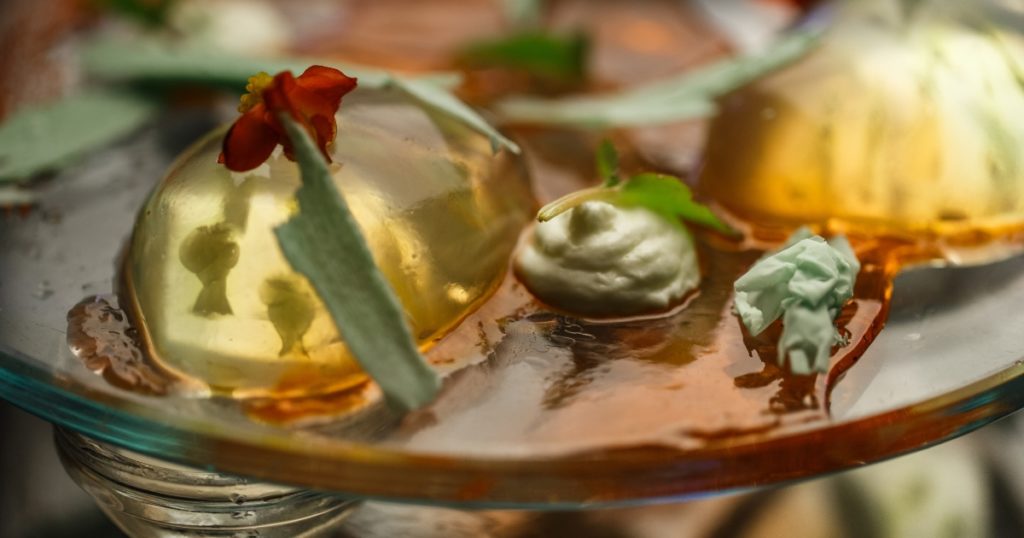
Molecular gastronomy is a sub-discipline of food science that focuses on the physical and chemical processes that occur during cooking. It often involves the use of high-tech tools and techniques to create avant-garde haute cuisine dishes. This involves using scientific principles to create unique textures, flavors, and presentations.
Deconstructed Dishes
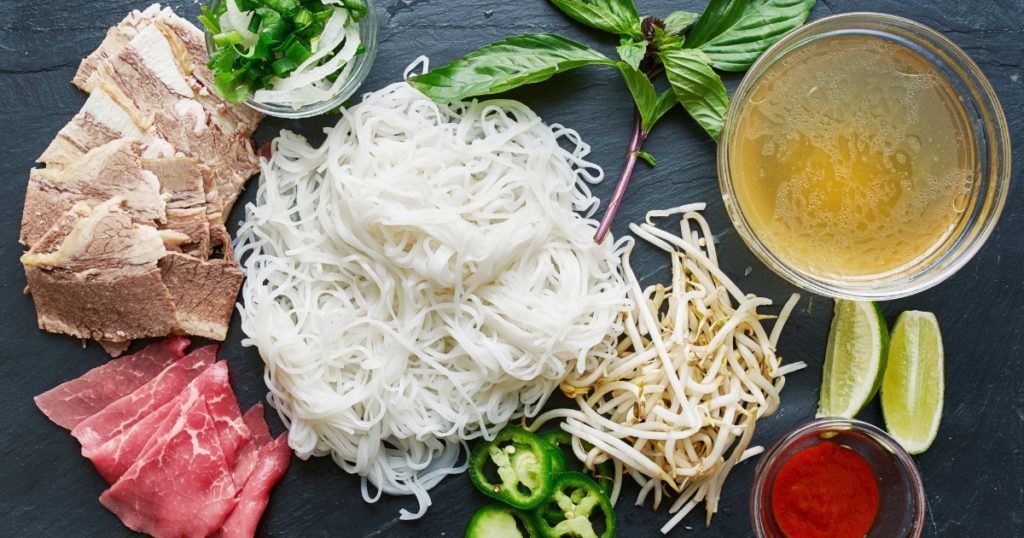
The name means exactly that: deconstruction. It’s actually a pretty simple method how to be avant-garde: chefs take a traditional dish and present it in a completely different way. For example, a pizza is presented as separate components, such as tomato foam, basil oil, and parmesan crisps.
Food Foam
Food foam involves creating a light, airy foam from a variety of ingredients. Chefs usually have a special tool called a siphon to create these foams, which can be flavored with everything from fruit juices to spices.
Edible Art
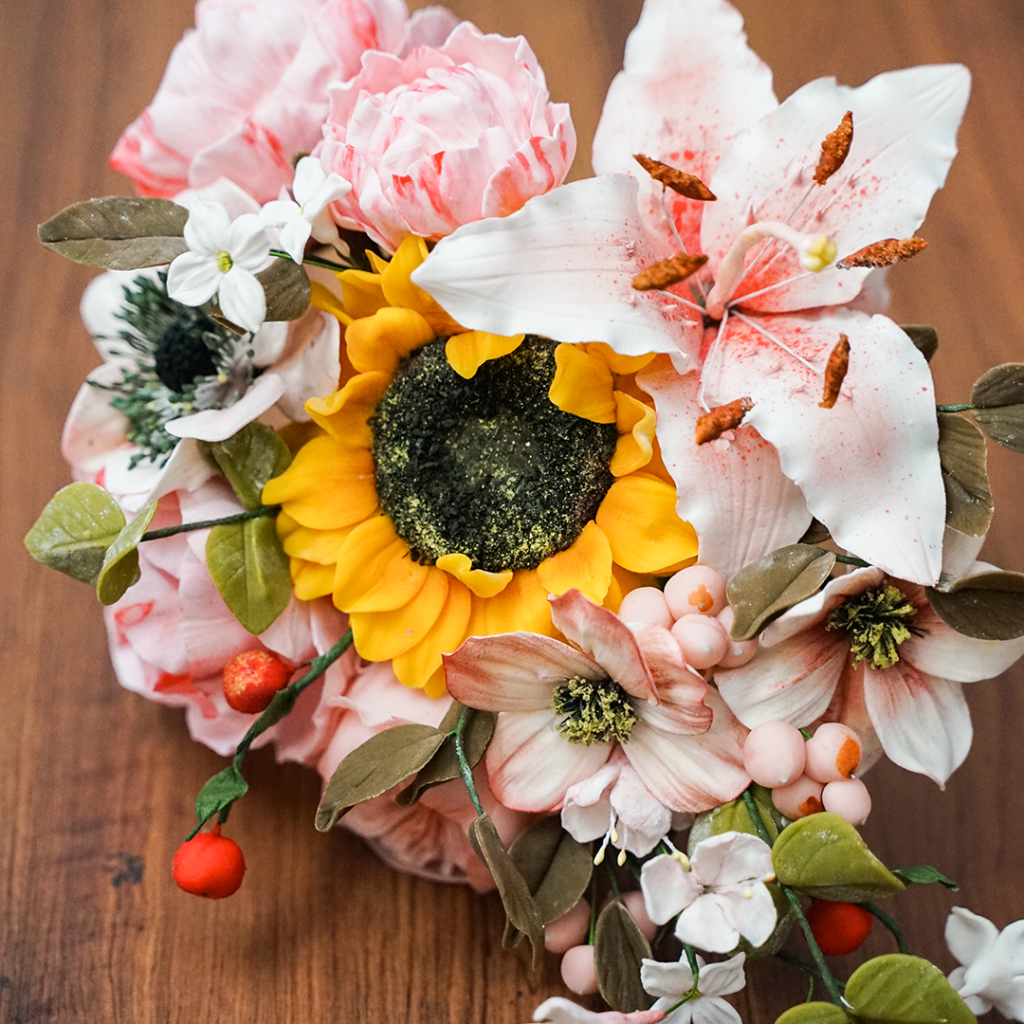
If you’ve ever wanted to use food to make art, well, you’d fit right in! Plenty of avant-garde chefs now do the same thing. They might use gold leaves or other decorative elements to creative dishes that are visually stunning.
A marker of avant-garde cuisine, after all, is the emphasis on artistic presentation,
This involves using food as a medium to create works of art. For example, chefs might use edible flowers, gold leaf, and other decorative elements to create visually stunning dishes. Another hallmark of avant-garde cuisine is its emphasis on artistic presentation. Edible art, such as using edible flowers, gold leaf, and other decorative elements, can create visually stunning dishes that are sure to impress.
Great examples of these are The Bailiwick Academy’s classes Art of Edible Flowers and the Gravity Defying Balancing Toys Cake.
Sous Vide Cooking
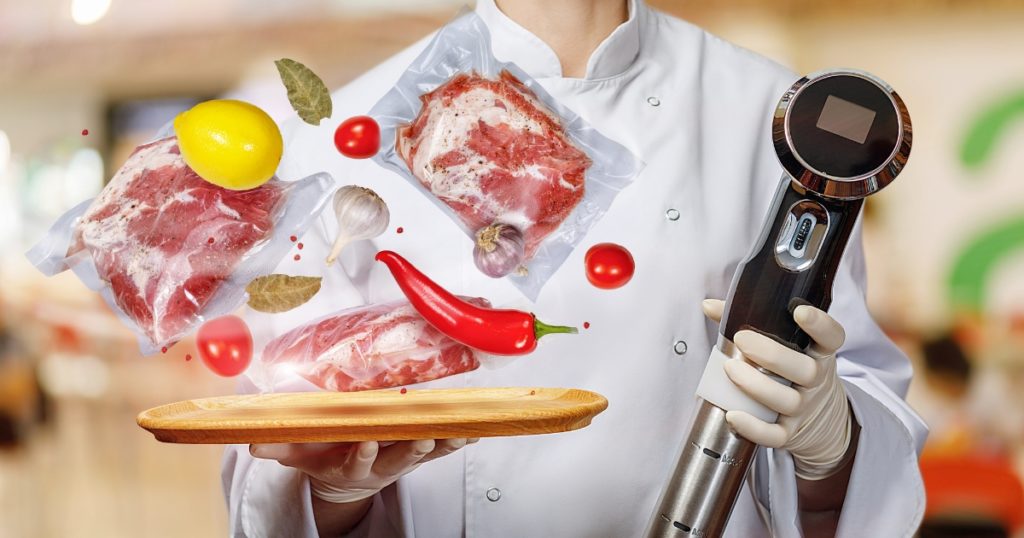
This technique involves cooking food in a vacuum-sealed bag at a precise temperature for an extended period of time. You’ll know you did this right when you get tender and flavorful dishes that are cooked evenly.
Liquid Nitrogen
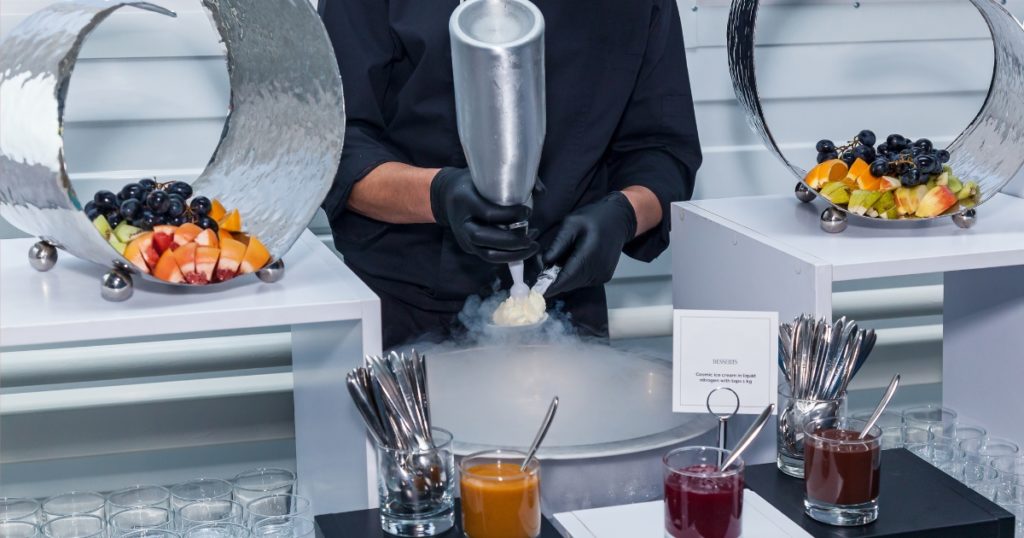
Chefs literally use liquid nitrogen to rapidly freeze ingredients, thanks to its temperature of minus 320.44 degrees Fahrenheit. And with such a quick freeze, the texture of food is preserved and the original structure of the item remains intact! This can help chefs make unique textures and flavors, such as a crispy exterior and a creamy interior.
However, do take note that the use of liquid nitrogen does have the potential to be harmful. Only those who have proper training or who are under supervision should try this technique.
Vegetable-Based Desserts
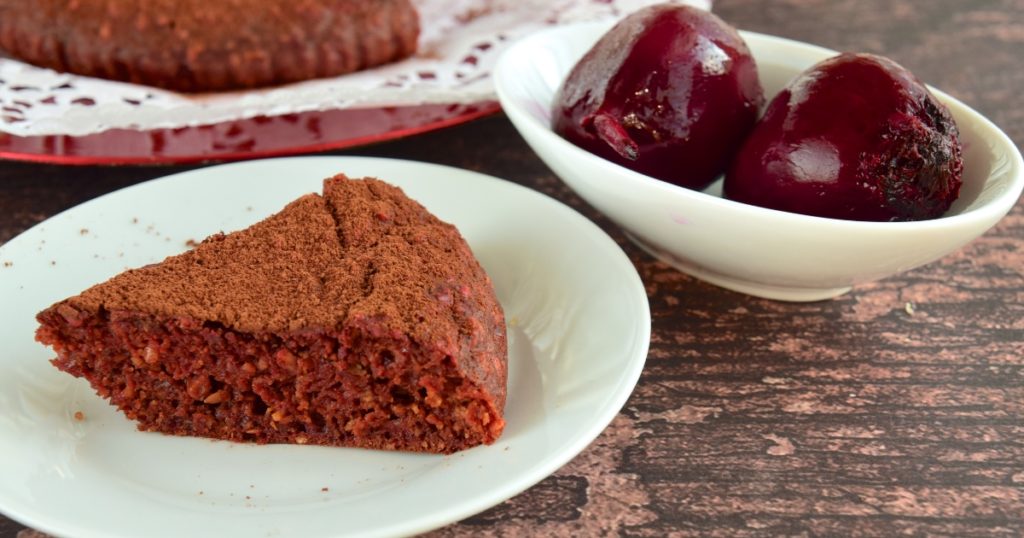
If you’re thinking of avant-garde vegan cooking, well, that possibility exists as well! This kind of avant-garde cooking involves using vegetables as the main ingredients for a dish, such as beetroot and chocolate cake or carrot cake.
Use of unusual ingredients
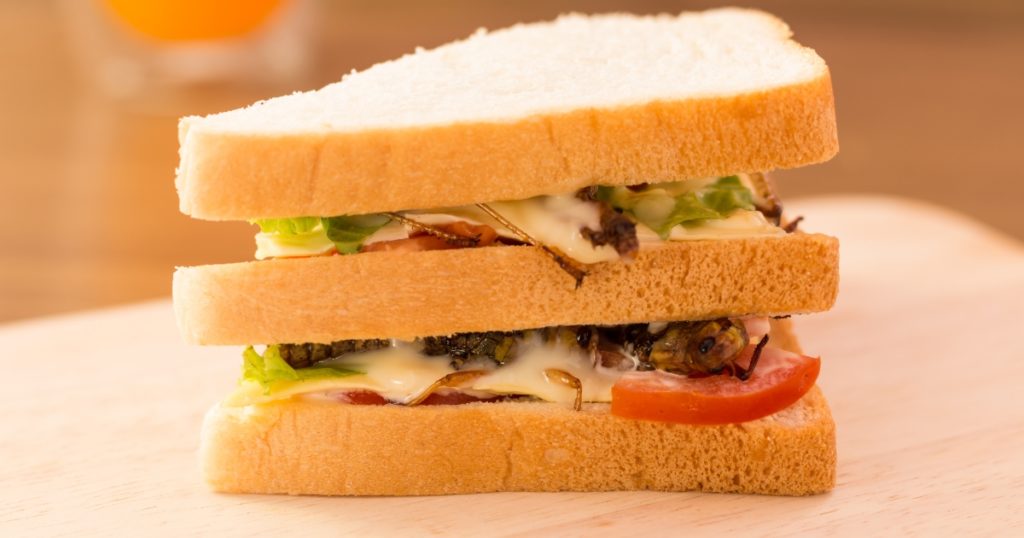
Want to go really weird, unique, and next level? Well, go past just using vegetables as the main ingredients. Go use insects such as crickets and ants! Some chefs even use algae and white truffles.
Using these ingredients may be intimidating at first, but when used properly, you’ll definitely get a memorable dish!
Is it hard to make avant-garde cuisine at home?
Avant-garde restaurants usually have a lot of expensive equipment and different ingredients to achieve avant-garde culinary goodness. So is it possible to achieve the same at home?
Well, here’s some good news: while avant-garde cuisine may seem intimidating, many of the techniques used can be adapted for home cooking!
For example, you can experiment with sous vide cooking with the use of a precision cooker. You can also try creating foam with a handheld frother. Some ingredients, like edible flowers or gold leaf, can be purchased online or at specialty food stores.
In short, the possibilities are endless!
A word of advice about avant-garde cuisine
While avant-garde food can give you, your family, friends, and customers some pretty awesome taste experiences, there are also some potential downsides to consider. For one thing, it can be expensive to purchase special equipment and ingredients.
Also, not all experimental dishes are satisfying. Additionally, some techniques, such as using liquid nitrogen, can be dangerous if not used properly.
Our suggestion is that if you plan to get into this niche, it’s best to go all in! This will prevent you from wasting time and resources on unused ingredients. You also won’t have any regrets about buying any expensive equipment.
Avant-garde cuisine is definitely worth trying!
To wrap things up, avant-garde cuisine recipes are still something worth trying to make, even if it’s just you doing home cooking. You’ll be able to unlock exciting and innovative recipes that will give you new and unexpected taste experiences. It can be a little intimidating to make at first, but just do some research, practice a lot, and you can adapt plenty of these techniques for home cooking!
Want to make avant-garde cuisine at home?
Want to try your hand at making some avant-garde cuisine at home? Well, you can with The Bailiwick Academy. Try avant-garde cooking with TBA’s resident rebellious chef, Chef Miko Aspiras!
How? By taking Chef Miko’s latest online class: Unique Cookie Concepts!
We’re sure you love cookies, correct? Well, in this class, you’ll be able to take cookies to the next level – and love them even more! You’ll be able to make three avant-garde flavors:
- Horlicks Chewy Cookie and Cheese Pots is a sweet and savory cookie with a chewy Horlicks flavored cookie base and is filled with a tangy, subtly sweet cream cheese feeling. And on top, it’s dusted with a Horlicks sugar mixture. It will definitely captivate anyone’s cookie craving as a unique cookie experience.
- The Mochi Matcha Cookie is a cookie within a cookie! Chocolate cookie with a surprise cookie center topped with homemade marshmallow
- soft, chewy, and delightfully earthy cookie with a chewy mochi center and a crisp white chocolate top. Matcha lovers will definitely enjoy this, and convert people to loving matcha too!
- The S’mores Cookie Inception is every cookie lover’s dream come true! It’s a chocolate cookie with a surprise cookie center, then topped with a homemade marshmallow. In short, it’s two cookies in one! Who isn’t going to love that?
After this class, you’ll have successfully created avant-garde cuisine, made new products for your food business, and set a new standard for cookie greatness! And isn’t it a great feeling knowing you just did it at home, without fancy equipment whatsoever?
So what are you waiting for? Sign up at The Bailiwick Academy today and get started on making these unique cookie concepts!
—
Keep coming back to The Bailiwick Academy blog for more kitchen tips, tricks, and much more!
]]>But we Filipinos aren’t only limited to those two. And if you indeed are limiting yourself to a particular spread for sandwiches, then we invite you to discover more. You might surprise yourself as you find yourself having a new favorite in the course of trying different spreads for your sandwiches.
So what sandwich filling should you try, exactly? Well, that’s what this article is for.
In no particular order, let’s take a look at some of the popular (making them the best) sandwich spreads you can try here in the Philippines – whether on bread or if you’re going to eat the spreads directly (you can!).
Oh and just to be clear, when we say sandwiches in this article, we just mean delicious bread and the spread, or the “palaman”. There will be no meats like roast beef or fried fish. If you’re looking for popular sandwich ideas, then check out our blog post on good sandwich ideas, okay?
On to the list!
Popular Sandwich Spread 1: Cheese Spread
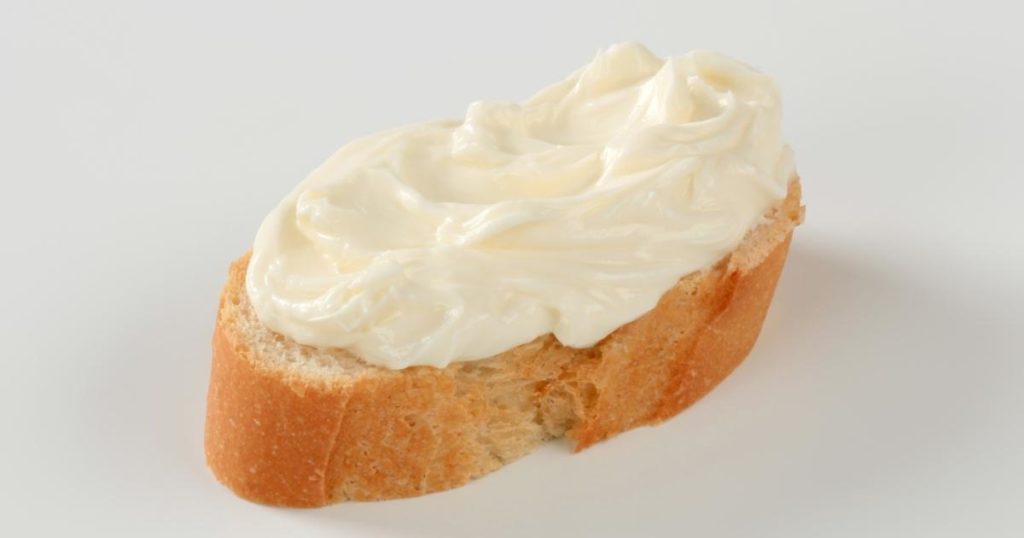
The great thing about the cheese spread is that it quickly adds some contrast and flavor to whatever you’re eating, be it pandesal, sliced bread, or even crackers. It’s also cheap and accessible in either grocery or sari-sari stores, making it one o the most popular sandwich spreads ever.
Cheese spread is also pretty versatile – it’s not only for your favorite carbs! You can smear it on hot dogs, fruits, and pretty much whatever you eat with cheese.
And if you’re bored with the usual cheese spreads, you can find plenty of variations in the market to buy. Some examples are Queso de Bola spreads, pimento cheese spreads, and cream cheese spreads.
Popular Sandwich Spread 2: Mayonnaise
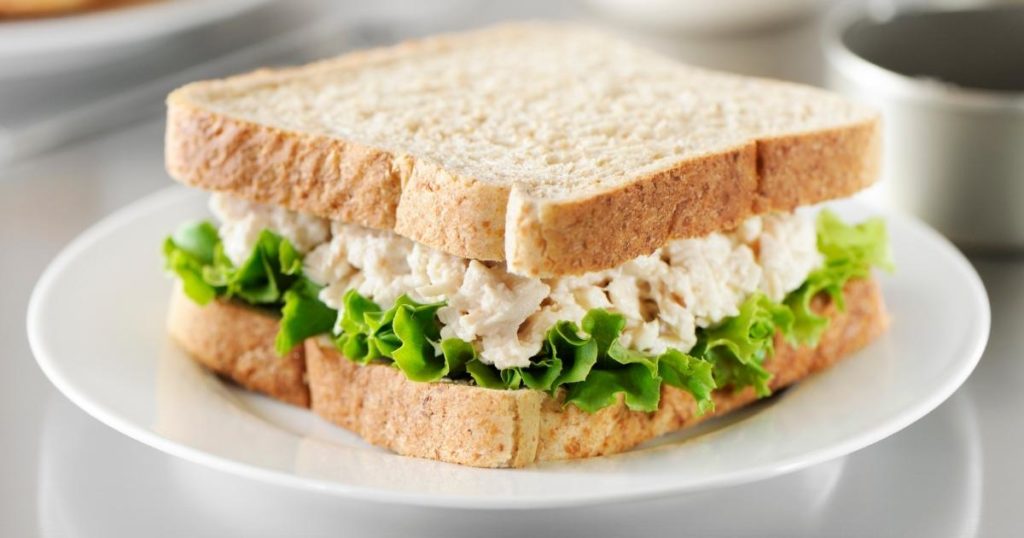
Technically for us, mayonnaise is not a spread by itself. When we eat mayonnaise, it’s usually within a particular sandwich, like an egg salad sandwich.
But some Pinoys do eat it by itself and just bread. Mayonnaise CAN be kind of thick and is definitely creamy. We guess that this combo can count as a complete meal for people who are rushing to eat.
Just like the cheese spread, mayonnaise is also pretty versatile. It serves as an ingredient for a lot of food like the spreads for chicken sandwiches and for macaroni salad, a Christmas favorite. It’s also a base for many sauces and dips and can add flavor to any popular sandwich of your choice.
Popular Sandwich Spread 3: Peanut Butter
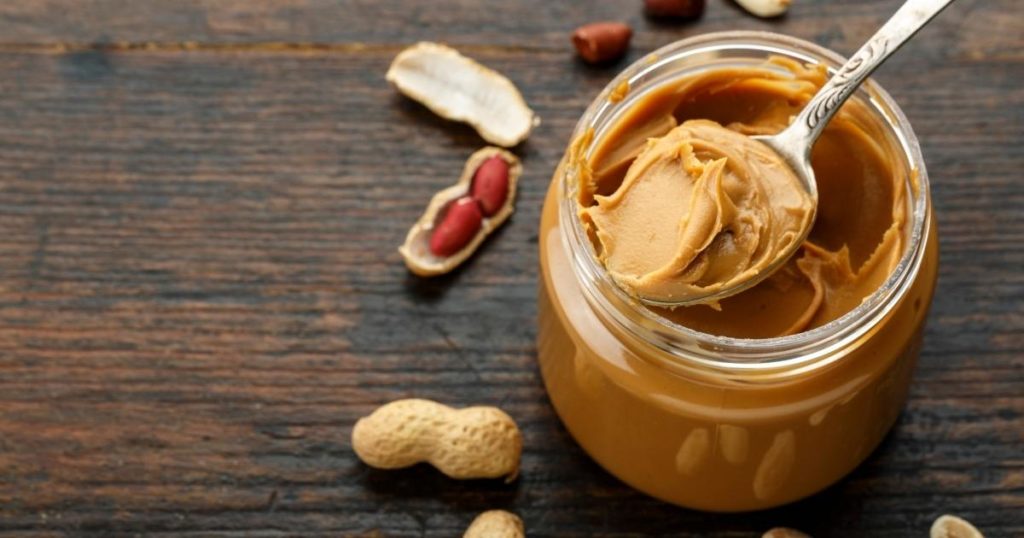
Peanut butter is another of the popular sandwich fillings here in the Philippines. And who wouldn’t like peanut butter? It’s made of roasted peanuts, giving it a caramel taste, and mixed in with sugar.
And because it’s made of peanuts, there’s a delicious and powerful combination of sweet and salty, making for the flavor layer effect that’s just so good! Now imagine applying that to bread or crackers, another combo of sweet and salty.
Yum, are we right?
There are now many variations of peanut butter, like almond butter (which incidentally, is one you can eat while on a keto diet, unlike a lot on this list) and cashew butter. To each his or her own nut, we guess?
Popular Sandwich Spread 4: Fruit Jam
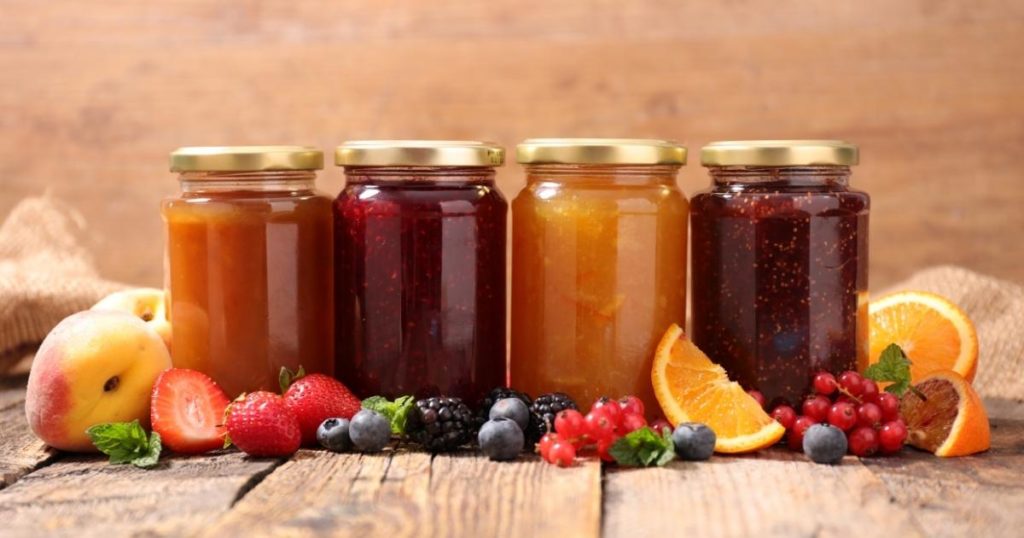
Another thing that Pinoys love is fruit. Hey, we have plenty of fruits, why wouldn’t we love them, right? Of course, the only problem is that not all the fruits in the Philippines grow in the same area or island, so we’d have to either go to that place, or buy fruits.
Both options can get pretty expensive!
So we’re thankful that there’s such a thing as fruit jam or fruit marmalade. Flavors such as strawberry, mango, and orange are some popular spreads for bread. But lately, there have been more experiments such as calamansi, santol, and coconut, which make for more unique flavors.
The experiments didn’t just stop with fruit flavors. Spread producers are now filling the market with combinations of fruit and other ingredients like mango and cheese. There’s even bacon jam mixed with peach!
We can’t wait to see what the next fruit jam flavor will be, especially since we know whatever it is, us sandwich lovers will be the winners.
Popular Sandwich Spread 5: Chocolate Spread
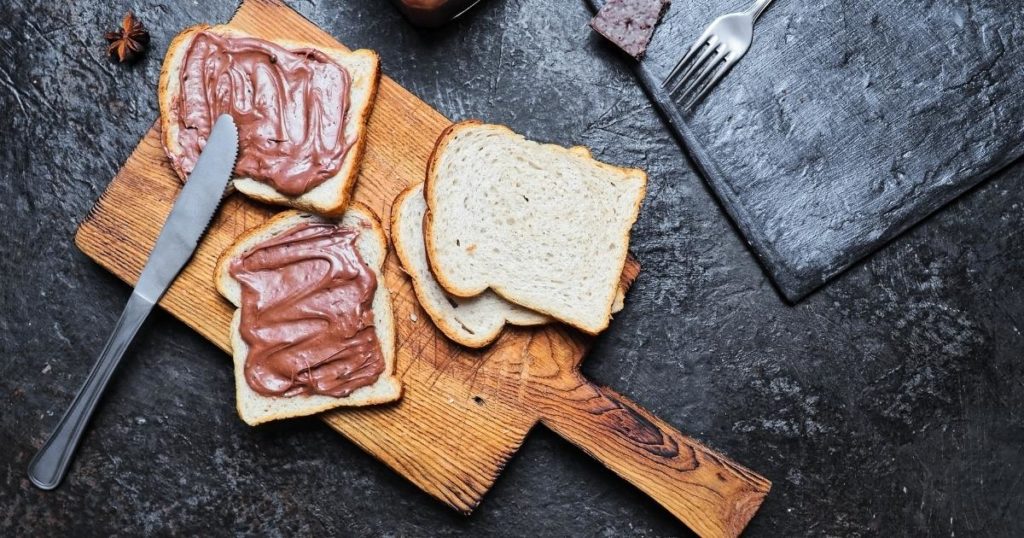
Ah, chocolate. We bet that any most popular sandwich fillings list (oh, like this one!) would put chocolate at the top.
Think about it. Why is Chef Ely Salar’s restaurant always full of customers, right? And that’s also why our courses involving chocolate always get enrollees.
And when it comes to chocolate spreads here in the Philippines, we have plenty of options! There’s milk chocolate, dark chocolate, and white chocolate. You also have your choice of texture, whether crunchy or creamy, as well as the taste, whether you want it super sweet or just right.
These chocolate spreads are likely to be available only in convenience stores or in groceries. You know where to go when you’re craving chocolate on bread! Especially freshly-baked ones…
Mmmm!
Popular Sandwich Spread 6: Liver Spread

Liver spread is a savory spread. One particular brand has made this spread popular in the Philippines. It can be made from pureed pork, beef, or chicken liver mixed with cereal.
Think of it as the Filipino equivalent to pâté. It’s also creamy and has tiny chunks of meat, which can make for a great meal when smeared on bread or an appetizer when put on crackers. It’s also highly flavorful, which means liver spread makes for a great sandwich spread overall!
You also use liver spread on some Filipino dishes like caldereta, Filipino spaghetti, and lechon sauce.
So if you want to experience Pinoy pâté, make sure to try out liver spread! But if you’re interested in making your own liver spread, check out our Chicken Liver Pate class.
Popular Sandwich Spread 7: Condensed Milk
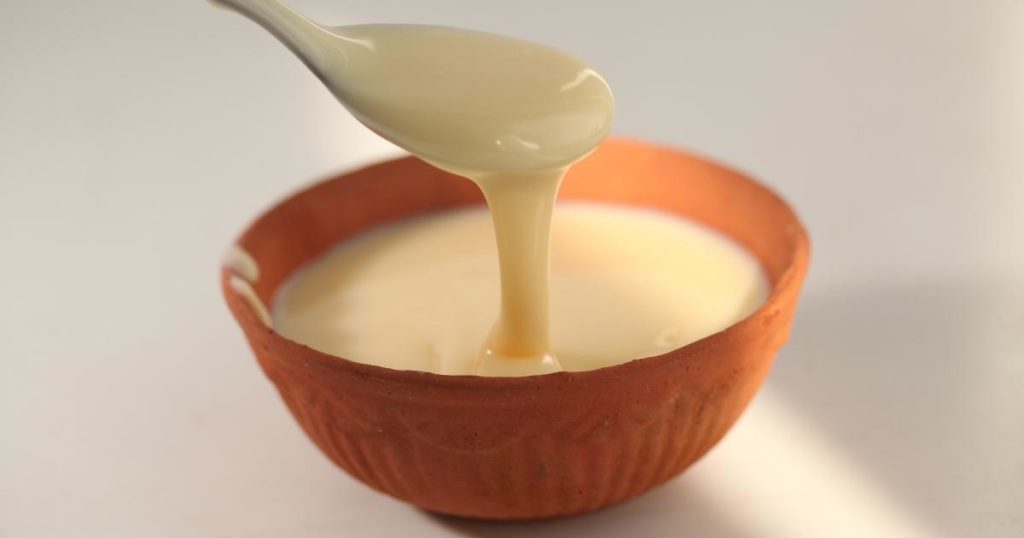
Wait what? Condensed milk? Really?
Well, yes. We know you usually eat it with shaved ice desserts or fruits, so it probably won’t usually be the answer to “What is the most popular spread used on sandwiches?”, but hear us out.
Or you know what, try it out.
Yup, go and buy a can of condensed milk. Pop it open, and smear some on your bread. Eat it.
Super good, right? That’s a reason why in some Indian restaurants, they offer condensed milk with their roti or naan.
And here’s another way to make it better: go smear some condensed milk on the bread, then pop it into the toaster. You’ll thank us later!
Popular Sandwich Spread 8: Butter
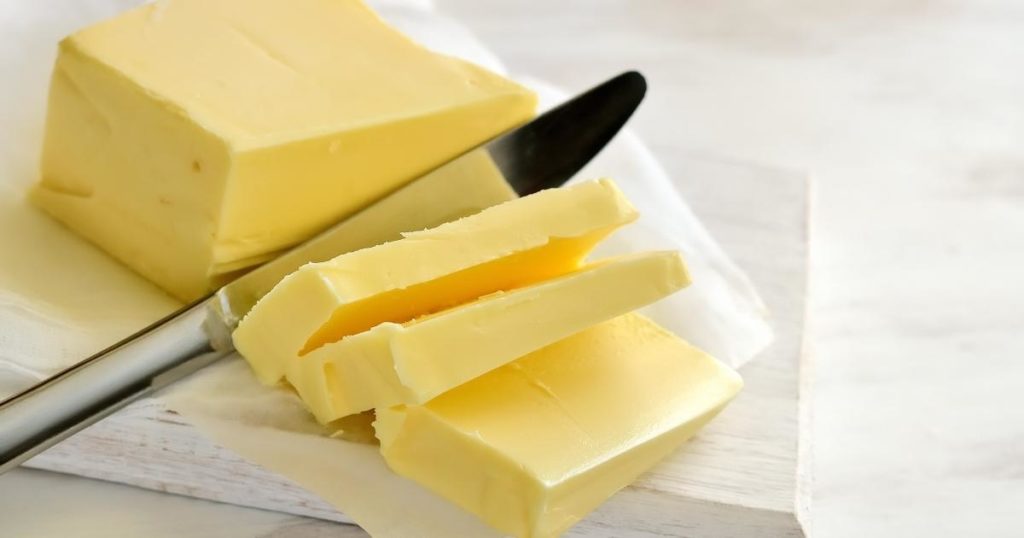
Butter is definitely a sandwich spread that’s also pretty popular. Not only is it considered relatively healthy, but well… butter pretty much goes with everything, not just bread. It’s probably because butter is made mostly of fat.
This explains it more:
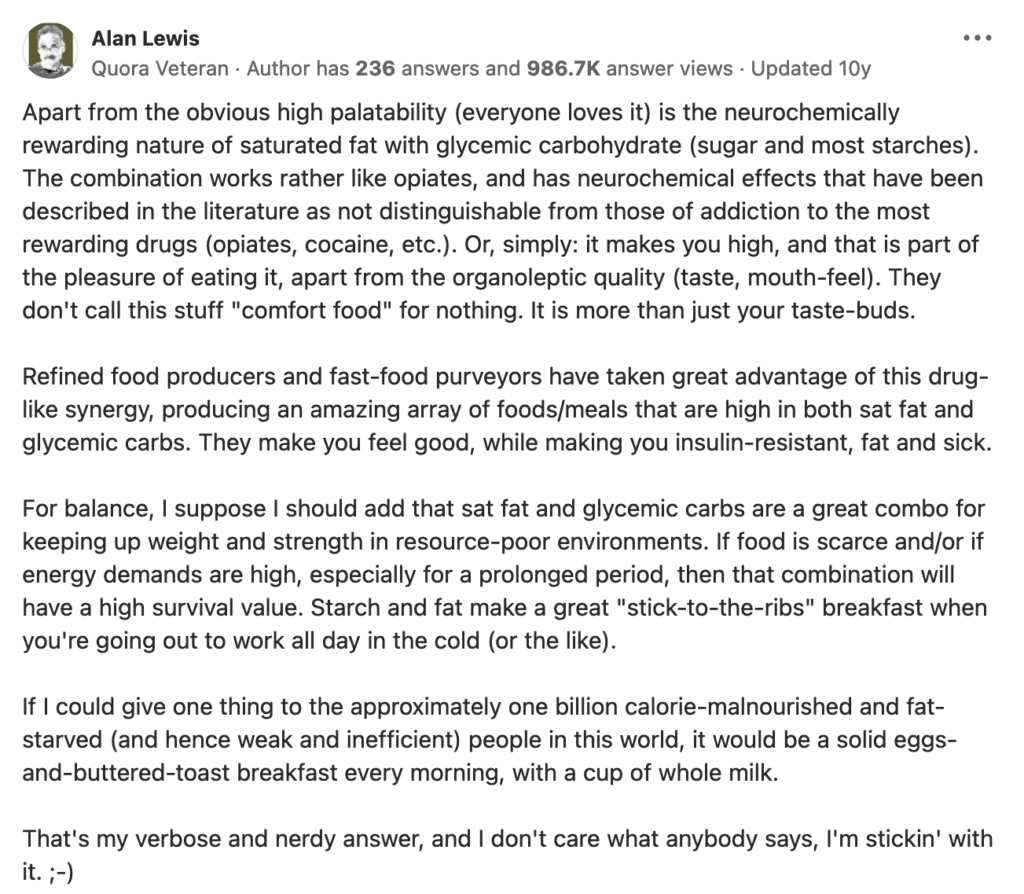
Or well, we could just also think that the saltiness of butter goes with the sweetness of bread… or even that any flavor is better than just plain old bread?
Let’s just go with that why butter is part of this list of popular sandwich spreads.
Want to add more to your sandwich spreads list?
If you’ve reached the end of this list and you’re still looking for a sandwich spread to try (maybe you’re not feeling those in the list), we have a suggestion. What’s that? You can always do some homemade sandwich spreads for yourself, especially if you don’t like the taste of these popular bread spreads.
To do this, check out Chef Miko Aspiras’ latest class: Sweet Spreads Deluxe!
That’s right! You’ll learn these four premium, luscious spread recipes:
- Burnt Butter Salted Caramel Crunch – a spread that has a sweet and salty flavor profile with the deep taste of burnt butter.
- Strawberry Calamansi Curd with Marshmallow – a spread made with strawberry curd, calamansi and fluffy homemade marshmallow.
- Ensaymada Butter – inspired by ensaymada buttercream topping with bits of crunchy ensaymada and salty cheese; and
- Chocnut Crunch Dark Chocolate Spread – influenced by the popular Pinoy candy bar, it’s a sweet and salty peanut croquantine in a smooth dark chocolate spread.
After this class, you won’t have to wonder about which different sandwich spreads to get – you know you’re going to want these waiting for you when you open your ref! They’re that good, you won’t need bread to enjoy them!
Plus, not only will you have some of the best sandwich spreads ever, you can also use them for cakes, pancake toppings, and even as flavor enhancements to your buttercreams.
And since Christmas is coming up and people are looking for giveaways, just put these in some cute bottles and you’re good to go!
Cater to the sandwich lovers in you and your family (and your customers too)! Sign up at The Bailiwick Academy today and enjoy spreading some deliciousness – literally!
—
Keep coming back to The Bailiwick Academy blog for more kitchen tips, tricks, and much more!
]]>If you’ve eaten from delicious restaurants like Poison Donuts, Workshop Bakery, and Scout’s Honor, then congratulations. You have already experienced the genius of one of The Bailiwick Academy’s instructors, Chef Miko Aspiras!
At a very young age, Chef Miko is already living the dream most chefs would want. He has multiple restaurants and awards under his belt and has been featured on multiple websites and magazines, not just locally but also abroad. He is even known for coining the term basque burnt cheesecake!
What more could any chef want?
His accomplishments are certainly very aspirational. But oftentimes, we forget that successful people had to do a boatload of work before getting their breakthrough.
And that’s why in today’s blog, let’s take a quick, closer look at Chef Miko’s journey, and let’s appreciate all the work he did to get where is today.
Get ready to be inspired!
Chef Miko Aspiras’ beginnings
Chef Miko told Philippines Tatler that his love for food came at a very early age. For example, when he was five years old, every time he didn’t like the food that was being served to him, he would mix seasonings, herbs, and spices with rice.
But Chef Miko’s first true baking experience was when he was 11 years old. He assisted his Aunt Annie in making food for her catering business. This particular experience was the start of his walking down his current culinary path.
He then started studying hotel and restaurant management at De La Salle-College of Saint Benilde. What he would do next would be one of the many accomplishments he would have in his more than 10 years of baking.
One of Chef Miko’s first wins
While he was still studying, he joined a cheesecake competition and made it into the finals, even if he didn’t have any culinary or pastry training. As he says in his interview with Harvard Business Review:
“During the elimination round, one chef even said that my entry was not edible. I thought I’d be eliminated but the judges gave me a chance and a spot on the final round because they said my concept was strong and they saw potential in me.”
What he did instead was to keep practicing the recipe, a white chocolate and strawberry fondue cheesecake, over and over. And he won first place!
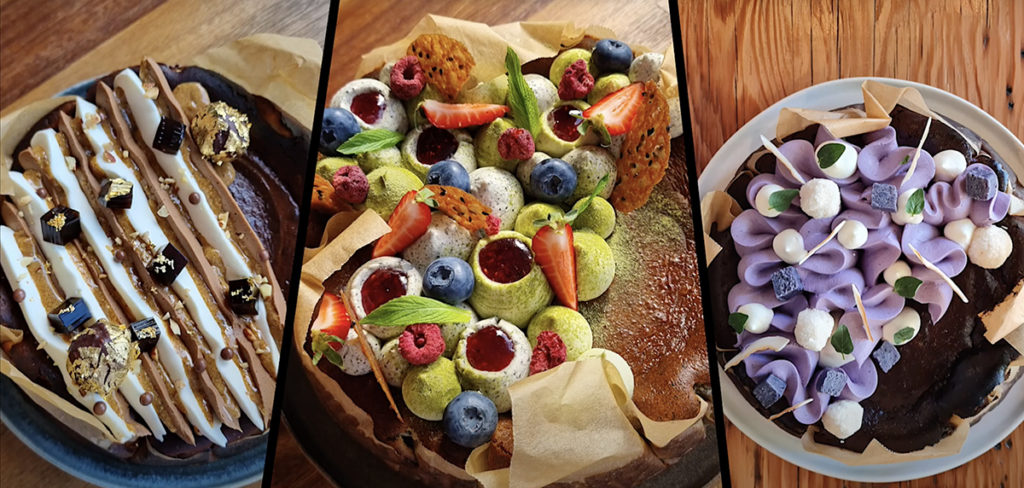
According to this SBS article, after this, Chef Miko would then gain recognition as the best pastry chef out of 175 students. And as soon as he graduated, he was hired by EDSA Shangri-La as a commis chef.
Solidifying his pastry presence
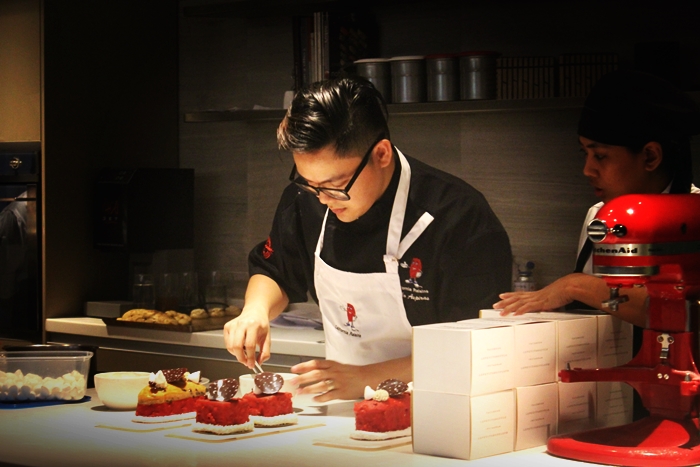
Even if he already got hired by one of the best hotels in the country and won first place in a competition, Chef Miko Aspiras didn’t let success get to his head. If anything, he wanted to achieve more!
And in fact, he did:
- He was invited by the Pastry Alliance of the Philippines to represent the Philippines in a contest in Hong Kong, where he won the gold medal.
- He has a total of six golds, three silvers, and two bronzes, both for local and international competitions.
- Chef Miko Aspiras was one of the speakers at the 2016 Madrid Fusion Manila event.
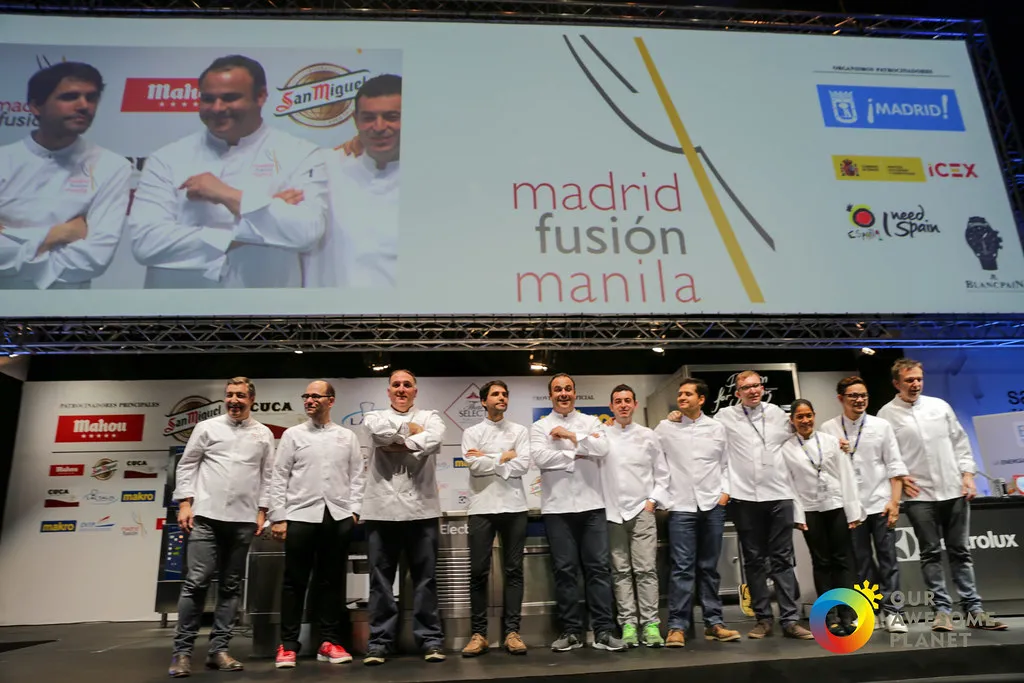
- He has also worked for Maxims Hotel and Fairmont Hotel, where he created unforgettable desserts.
- Chef Miko was featured in Asia’s Forbes 30 under 30, Moneysense’s “Millionaires Under 30”, and recognized as Philippine Tatler’s Best Pastry Chef in 2018.
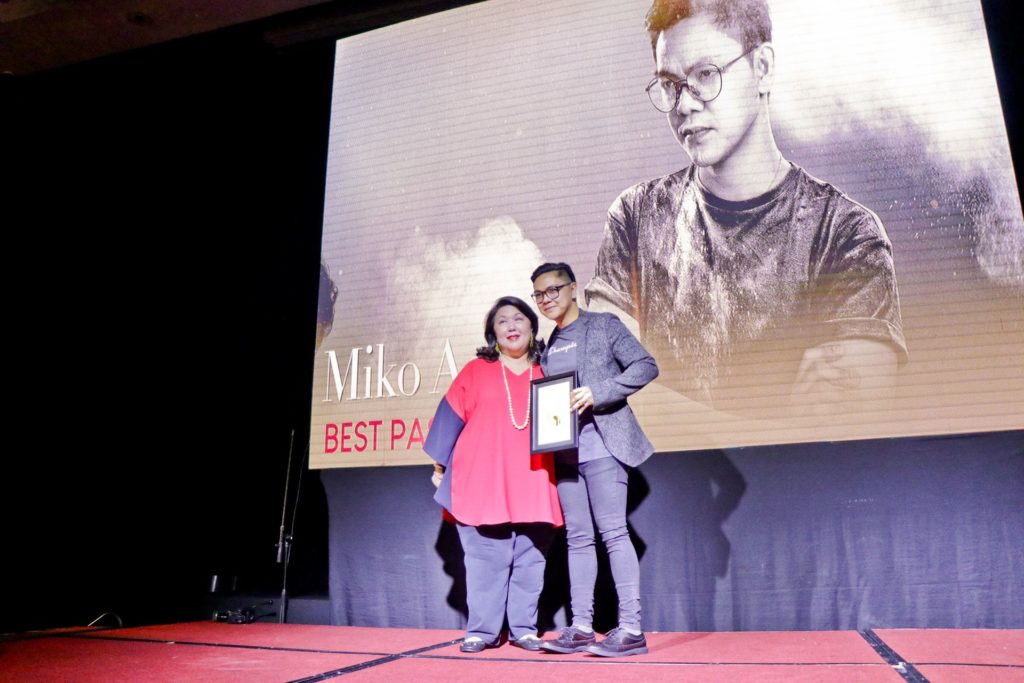
- He opened Tasteless Food Group with partners. They currently have more than 20 stores and seven concepts (including franchises) across Manila.

- He wrote a book with Chef Aileen Anastacio entitled A Piece of Cake.
- Of course, let’s not forget that he has online classes with us at The Bailiwick Academy involving the basque burnt cheesecake, croquembouche, and fruits!
The move to Australia
In June of 2019, he and his husband JV moved to Australia.

In an interview with Australian Filipina, he shared that the move was an eventuality. Plus, he felt that he had already accomplished all that he could in the Philippines.
And true to his tenacious nature, Chef Miko Aspiras hit the ground running upon arrival. Three days after the move, he scored an interview at the Hilton and became the Executive Pastry Chef at Hilton Sydney!
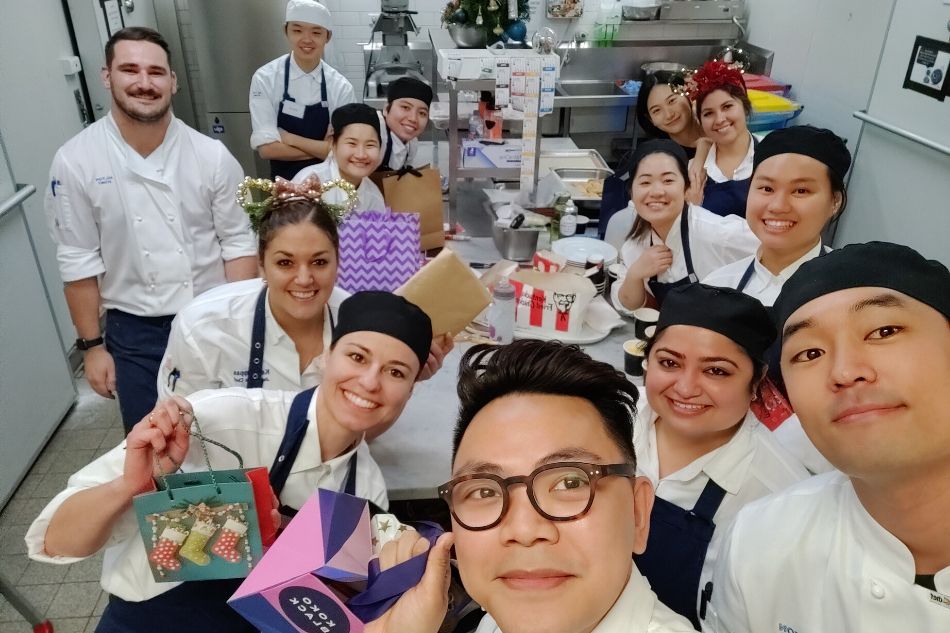
Sadly, because of the pandemic, they were all let go. But Chef Miko wouldn’t be as influential and as well-known if he let setbacks stop him, right?
That’s why in June 2021, he put up Don’t Doughnuts.
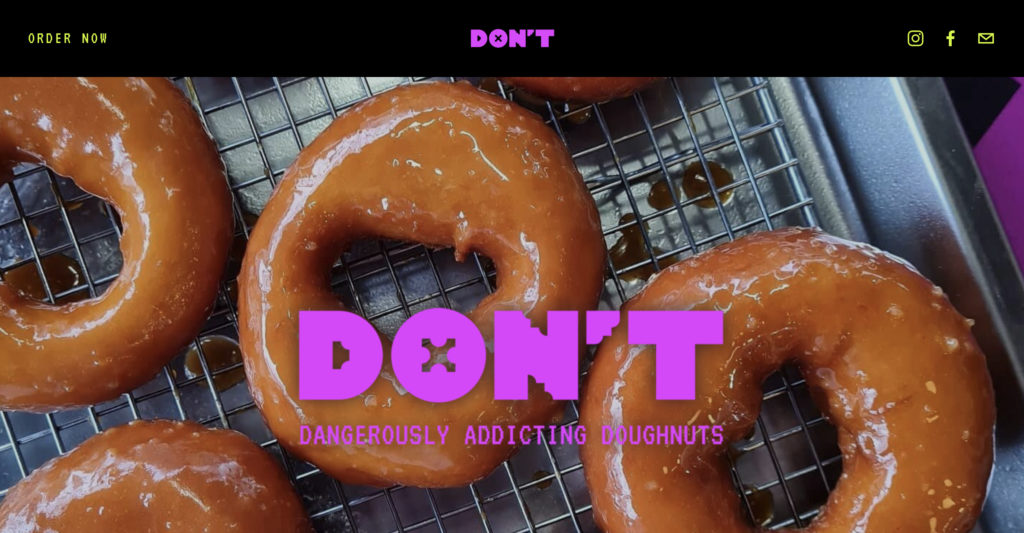
He calls it a similar concept to the Poison donut in the Philippines, but more leaning towards an Australian audience. And it hasn’t been very long, but it’s already earning rave reviews with its flavors!
Chef Miko hasn’t forgotten his Filipino roots either! He is well-known for his love of the country and always highlighting Filipino ingredients like adlai and calamansi.
He’s doing the same with his donuts! Check out this Choc-nut inspired donut:
And as he shared in an interview with Our Awesome Planet, he even managed to do a project with Select Kuwait, where he created 56 desserts for them.
And on weekends, Chef Miko accepts orders for Basque cheesecakes.
In short… there’s no stopping him anytime soon! We’re proud to have him on our Instructor roster and we can’t wait to see what ideas he comes up with next!
One last Chef Miko Aspiras fact you NEED TO KNOW…
Here’s one last thing you should know about Chef Miko. This thing is probably the most inspiring thing ever about this very talented chef.
You might have missed it.
He revealed it in an interview with Inquirer about being the first Filipino featured in So Good Magazine, what Chef Miko called “the Vogue for pastry chefs.”
Okay, enough suspense. Here it is:
Before he officially left for Australia with his husband, he has never worked or trained anywhere except in the Philippines. He loved to travel, though. So what he would do during travel was keep his eyes open and pay attention to the various desserts he would see so that he would always have new ideas.
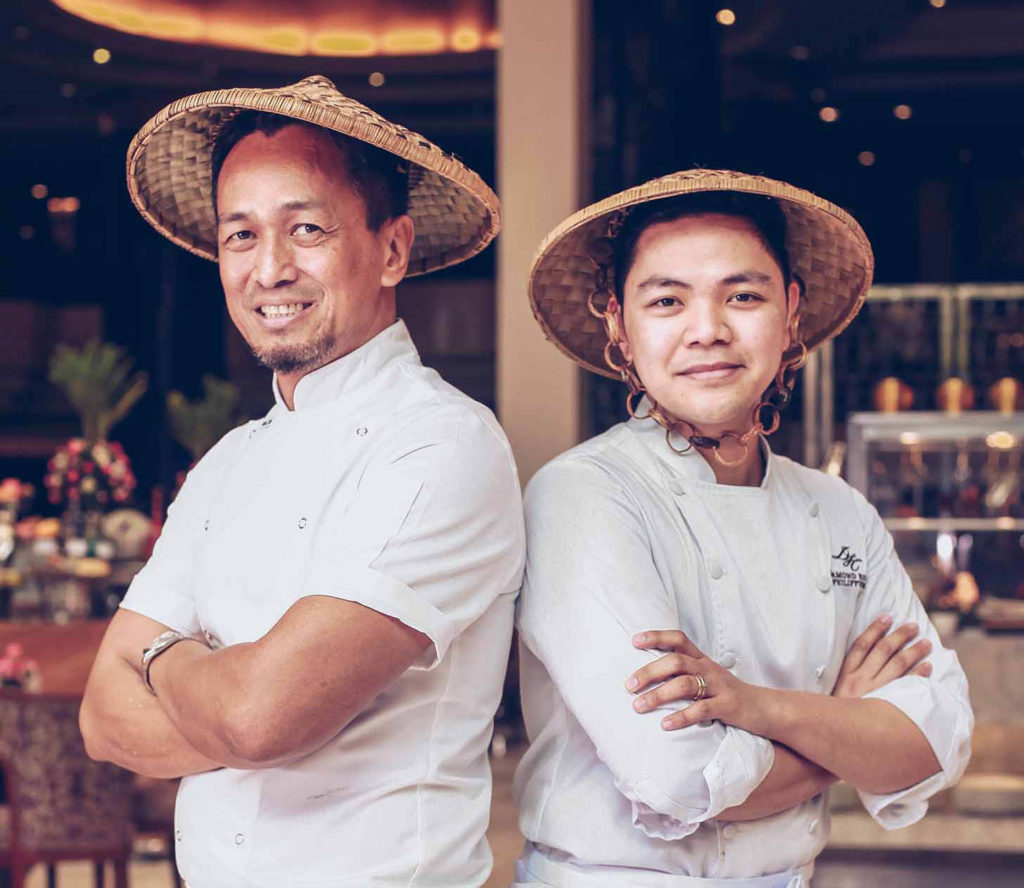
Imagine that!
So if you’re aspiring to be a success like Chef Miko, you don’t need to go anywhere else to become a first-class chef. Just practice what you know, be the best you can be, put yourself out there, and the world will notice you!
And when it comes to skills, all you need to do is enroll in one of our classes at The Bailiwick Academy. All of our classes are from the world’s best bakers and chefs. That means that not only are these recipes tried, tested, and very delicious, but you can also use them to fulfill your dreams of becoming a world-class chef one day.
So what are you waiting for? Learn Chef Miko Aspiras’ delicious dessert recipes (as well as many others) – sign up at The Bailiwick Academy today!
See you inside!
—
Keep coming back to The Bailiwick Academy blog for more kitchen tips, tricks, and much more!
]]>In fact, if you haven’t tasted one, you’re might just be living under a rock. It’s that prevalent nowadays!
But what is a BBC exactly? Where did it come from? Why does it look like that? And…
So many burning (hehe) questions, right? Well, don’t worry! We’ll do our best to answer your questions in this blog post. Let’s get to it!
What is burnt basque cheesecake?
Burnt basque cheesecake is the international version of the tarta de queso of the La Viña San Sebastian cheesecake. La Viña is a bar and restaurant in San Sebastian, Spain. What makes this Spanish basque cheesecake different is the baking method. Usually, you bake regular cheesecakes slowly, using low heat. The burnt basque, on the other hand, requires high heat and a faster baking time.
In short, a BBC is basically still a cheesecake. You will just bake it quickly at a high temperature to get that singed look while keeping the insides soft and creamy.
Not only is it a unique cheesecake variation, but it’s also a baking technique! Cool, huh?

What is the origin of burnt basque cheesecake?
As mentioned above, burnt basque cheesecake originated in Spain. Pastry Chef Santiago Jimenez Rivera of La Vina Bar and Restaurant is credited for having invented it. He invented it three decades ago.
What he did was put together common pastry ingredients and cake baking ideas from various sources. The end result was a leveled-up dessert and a signature La Vina cheesecake. Of course, the process was a hit-and-miss one, but we’re glad he went through it. Otherwise, there would be no Spanish-style cheesecake that is toasted on all sides, right?

Why is it called BBC?
If you take one look at it, you’d understand why it’s called burnt cheesecake. The scorching oven temperature is the reason for this cheesecake’s dark, toasted look.
If you think about it, its exterior actually resembles an oven-baked pizza with uneven scorch marks. But of course, it’s not a pizza: it’s a burnt-baked cheesecake!
But did you know here in the Philippines, it’s also called basque burnt cheesecake. That term was coined by our very own TBA instructor, Chef Miko Aspiras.
Why that term? Chef Miko decided on this term to connote the origin (Basque region in Spain), its unique quality (burnt), and for what the dessert essentially is – a cheesecake.
Oh, and keep Chef Miko in mind. We’ll get back to him later, we promise.
(Speaking of Chef Miko, have you enrolled in his classes yet?)

How is it different from other cheesecakes?
It is not just a burnt New York cheesecake. The BBC has soft, cream insides similar to a souffle or crème brulee. It is also lighter and airier than the classic cheesecake, which usually has a firmer, more solid texture.
And don’t forget, it is baked differently with high heat and faster cooking time instead of low speed and heat.

How does basque burnt cheesecake taste like?
The burnt basque cheesecake has all that yummy taste that a classic cheesecake has but leveled up. It does not have a crust like its American counterpart, though. However, it does have a toasty, crusty exterior with a creamy cheesecake filling.
The burnt basque cheesecake taste is like heaven! It’s like eating a combo of your favorite desserts. It has the taste of cheese and the texture and creaminess of a souffle. And if you look closely, the exterior is similar to that of an egg pie or crème brulee. Are you asking yourself “is basque burnt cheesecake good?” Well, it only means one thing. It’s time to go get yourself a slice of dessert nirvana! It’s that good.
What makes BBC taste so good?
The combination of its burnt toasty exterior and soft, creamy and luscious interior makes the burnt basque cheesecake stand out in terms of taste and texture. It is not just the taste that makes it so good. It’s also how the dessert feels inside your mouth once you’ve taken a bite. It is creamy, light, and airy, much like a Japanese Hokkaido cheesecake.
How to keep burnt basque cheesecake?
One question often asked is how to store burnt basque cheesecake. Serving burnt basque cheesecake at a party? Let it reach room temperature a few hours after baking. That will make this stand-out dessert ready for serving when your guests start arriving.
You can also make it ahead of time, then store it in the refrigerator. Be sure to remove the burnt basque cheesecake an hour before serving to reduce the chill from refrigerator storage.
How long can basque burnt cheesecake last?
Wondering about the burnt basque cheesecake shelf life? Well, it is best to consume burnt basque cheesecake kept at room temperature on the day that it is baked. Just make sure you have given it enough time to get to room temperature after taking it out from the oven rack.
But if you would like to prepare it beforehand, burnt basque cheesecake can be made the day before. Make sure to keep in the refrigerator 3 – 5 days prior to serving.
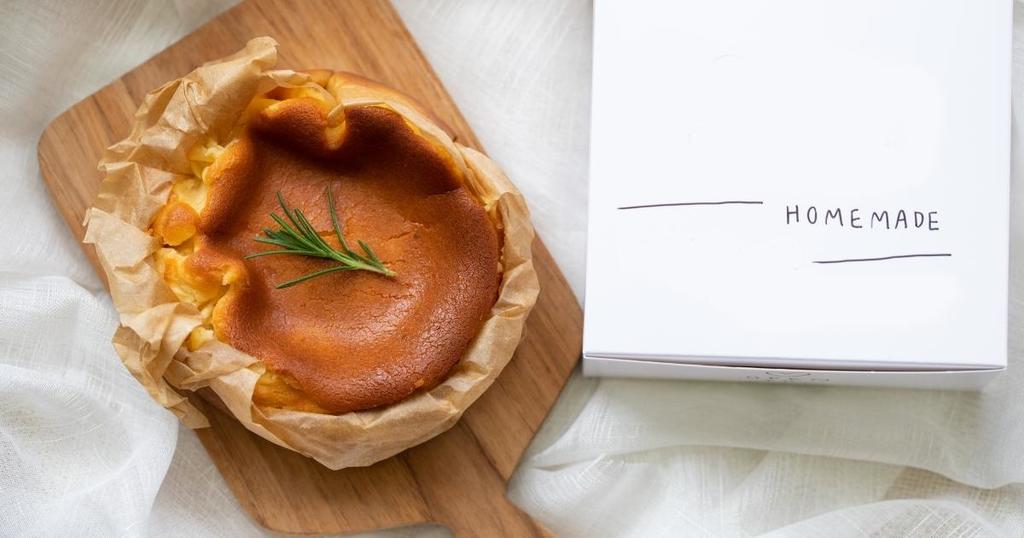
Can I freeze burnt basque cheesecake?
While the cheesecake will taste best if you consume it on the day you made it, the good news is that you can freeze burnt basque cheesecake from six to twelve weeks. Just make sure that the burnt basque cheesecake has cooled to room temperature before storing it in a freezer. And also, cover the whole cake with plastic wrap to directly seal the cake from other elements in the freezer.
Once you are ready to consume it, place the burnt basque cheesecake in the refrigerator the day before. That should give it enough time to thaw.
What are the ingredients of BBC?
The Spanish cheesecake recipe is actually very simple. If you are wondering what the recipe for burnt basque cheesecake is, wonder no more. They are just a few, commonly found ingredients. It’s even fewer than the ingredients you’ll find in a regular cheesecake recipe!
Ingredients for burnt basque cheesecake include cream cheese, cream, sugar, eggs, and flour. Of course, you can innovate and add more ingredients that will make your burnt basque cheesecake uniquely your own creation.
In case you’re wondering, you can even make a keto version of the BBC! Check out our keto cheesecake class here.

Can I make other flavors?
While BBC has its core ingredients, you can definitely innovate the recipe! Add any ingredient that you feel matches well with the taste of cheesecake.
Some of the flavors in the market include chocolate, coffee, Oreo, lemon, and even green tea.
You can even localize and personalize it by adding fruit toppings to create your own mango basque burnt cheesecake or strawberry basque burnt cheesecake. Or you can add that Japanese touch to come up with your own matcha basque burnt cheesecake.
Of course, just make sure you have the process of baking right down pat before experimenting with other flavors.

What is the process for making one?
Want to know the general process for making the BBC? There are plenty of Youtube basque burnt cheesecake videos that can tell you what to do. But if you just want to read, you would need the basic ingredients, a cake pan, and parchment paper. Since BBC does not have a crust, you have to line the pan with parchment paper.
Making BBC is all about the ingredients, the baking technique, and cooking time. Because it does not have a crust nor does it require a water bath, preparation and baking time is much quicker.
The process is actually very simple. Prep time is about 5 minutes. Work time is another 10 minutes. Baking time takes about 50 minutes. You also need to preheat the oven an hour before baking. The total time from preparing to the cheesecake being ready is about 3 hours.
Combine the burnt basque cheesecake ingredients to make the cheesecake batter. You will then pour the well-mixed batter into the pan with parchment paper. Make sure that the parchment paper covers the whole pan and exceeds its edges by about 2-3 inches. This process is to make sure that the batter is kept in place while it bakes.
After that, you may now place the pan in the preheated oven for about 55 minutes. This is enough time for the exterior of the cheesecake to set while keeping the inside jiggly like jello. Make sure the cheesecake has that burnt look before removing the pan from the oven. You can also make a custom-sized one by using different sizes of say, a round cake pan. Just make sure to adjust the ingredients needed accordingly.
Burnt basque cheesecake Philippines = The Bailiwick Academy
Want to learn how to bake this burnt Spanish cheesecake? Well, we have a class available. It’s not burnt basque cheesecake by Chef RV Manabat (you know, just in case you were wondering, hehe).
Remember that we told you to keep Chef Miko in mind? Guess what? You can learn how to make this cheesecake from the basque cheesecake masterchef himself! Check out the video below for our BBC class with Chef Miko.
Isn’t that great, Bailiwickers and home cooks? Not only does he teach you how to make La Vina basque burnt cheesecake, but he will also teach you his tips and tricks to making it even better. After this lesson, you might be well on your way for your food business to be known for making the best basque burnt cheesecake in Manila!
Enroll in this class and you’ll learn his original, sought-after recipe for Basque Burnt Cheesecake. Plus, you’ll get to make three different flavors: Almond and Coffee, Matcha Black Sesame and Mixed Berries, and Ube and Coconut.
So what are you waiting for? Follow your passion for creating delectable, mouth-watering dishes and desserts! Sign up now at The Bailiwick Academy!
P.S. Chef Miko’s class is on sale! Instead of it being at Php3,499, you can get it for 30% off!
That’s right, you can get it for only Php2449.30… but only up to December 13, 2021, 11:59 PM! Make sure you grab the opportunity to enroll! Check out what Bailiwickers have been saying:


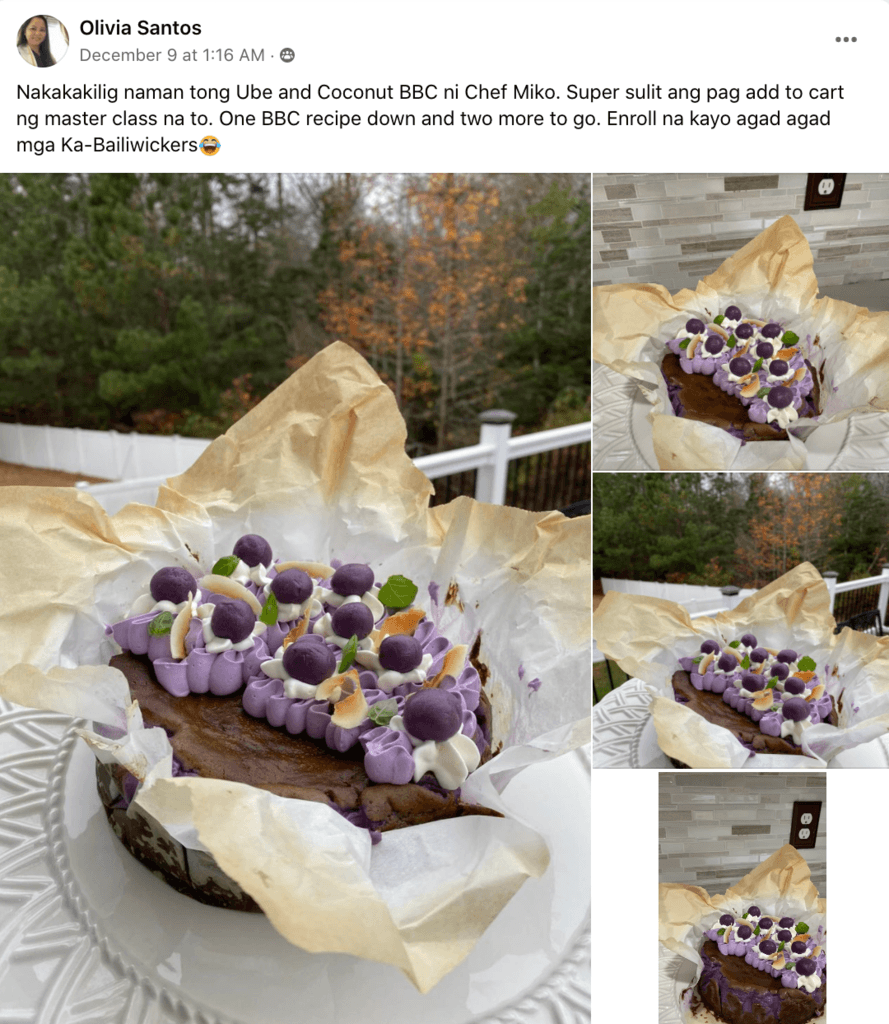
It’s definitely worth the enrollment!
P.P.S. If you won’t be able to enroll before the 13th, don’t worry. The Bailiwick Academy has a Christmas sale just for you!

That’s right! It’s 30% off for ALL CLASSES, not just Chef Miko’s BBC class. Time to add to cart, and check out when the sale starts.
Make sure to sign up at The Bailiwick Academy to avail yourself this Christmas gift!
]]>